Workshops¶
These workshops will take place in 3 different communities in Jordan each workshop is 2-3 days 3-4 hours a day depending on the progress, types of fabrics we get and the accessibility to a laser cutter
I will be targeting up to 15 people in each community 50% at least young females
The out come is depending on the capabilities and possibilities in the area, the Presentation of methods and techniques will be the same but we will use the most suitable ones for the area because if I really want people to benefit and to replicate the work and spread awareness around them I need to show them how to used the techniques available around them, we have some really poor areas that we need to target even if we could not use machines and technology, on the other hand we have areas that we can use digital fabrication in and the project will show the different possibilities with and without digital fabrication and how can machines affect the outcome, make it easier, faster and more accurate

Objectives¶
- learn how to use the laser cutter if accessible
- Raise awareness on the importance of fabric recycling
- Know what design thinking is and be able to innovate new designs
- Be able to distinguish between natural and synthetic fabrics
- Be able to use circular fashion concept and innovate new Garments
- Knowing the process of natural dying and being able to replicate it
- Finish the tapestry part of this location
- measure the fabric waste we reused and calculate the space we saved in landfills and the amount of water needed to recycle it
- categorizing the materials used to make the tapestry
Plan and Content¶
Day 1: Intro to Upcycling & Design Thinking¶
- The importance of upcycling
- The impact of fabric waste on our planet
- How to upcycle fabric waste
- Circular fashion concept
- How to know natural fabric from synthetic
- Design thinking concept
- Design thinking methods
- laser cutting (if accessible)
Day 2: From Idea To Fabrication¶
- fabric donation and measuring
- Tapestry making (The technique will differ from one place to another depending on the capabilities)
Learning Methods¶
- Group working
- Activities
- Experiments & Prototypes
Technique Used¶
- Sewing
- Interlocking
- laser cutting
- Natural Dying
Three locations, Three tapestries and Three different techniques¶
#1 Jerash (Gaza Refugees Camp/North of Jordan)¶
Date: TUE 21/2/2023 - THU 23/2/2023¶
The core of this workshop was how to reuse your old fabrics using traditional sewing
We started with introducing the upcycling concept, design thinking and an introduction to circular fashion and natural dying, as I mentioned earlier this area has a very low education levels they are not exposed to new technology or else so the topics I was introducing were brand new for them they were amazed and excited especially when I started talking about the modular circular fashion, they could not have an easy access to a laser cutter but they were willing to cut the garments by hand and interlock them

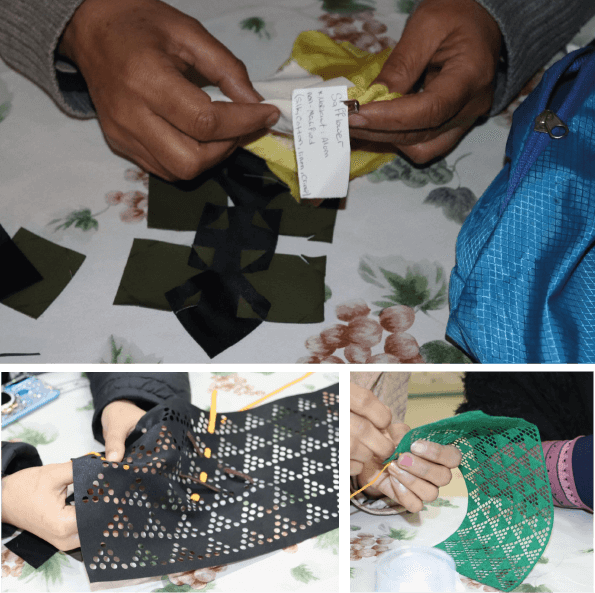
We gathered the donated waste and started cutting them into different shapes to add them together forming a 160cm*190cm piece that was made in collaboration with local women who believed in the idea and were so supportive
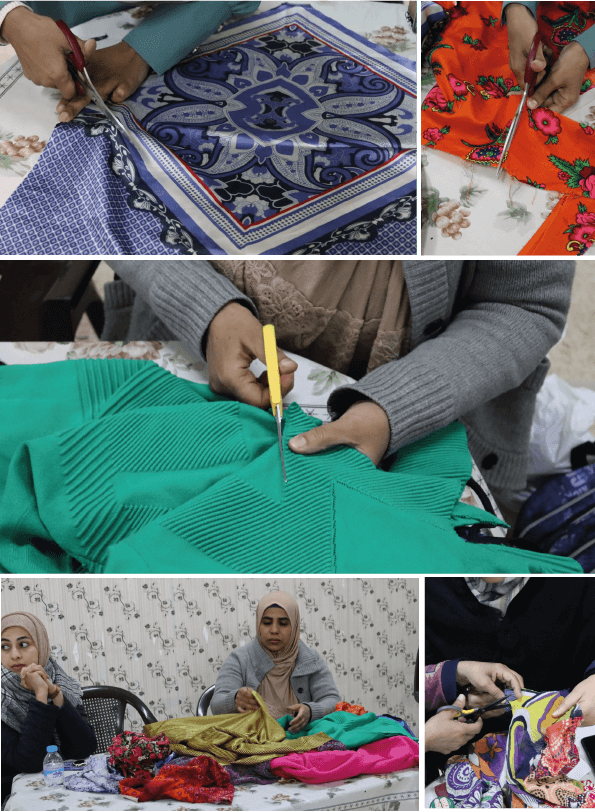
Designs in the making¶
The workshop's Storyboard¶

After cutting we started sewing the pieces together it was fun working hand by hand to make a project done in 4 hours we all learned from each other, shared experience in different fields, and enjoyed the Chet chat
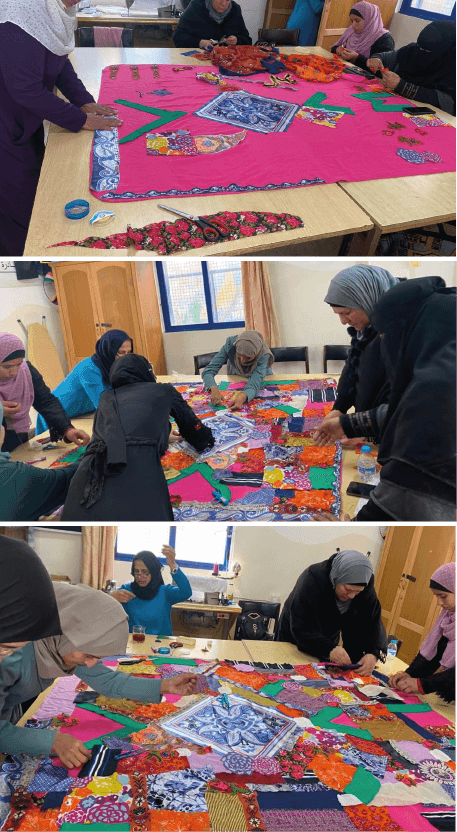
Result¶
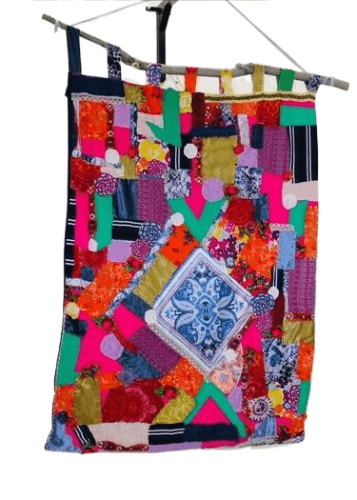
#2 Al Balqa'a (Jordan Valleys)¶
Date: MON 13/3/2023 - WED 15/3/2023¶
The core of this workshop was how to Naturally Dye your old white fabrics
In this workshop I was lucky enough that my mother had a white cotton fabric roll that she did not need anymore and wanted to through away so I took it and made my workshop using an upcycled white cotton fabric
I started this workshop by introducing the fabric waste issue in the world, an introduction to natural dyes, what materials gives good colors that sticks to fabric's fibers and the steps to dye our white fabrics, this was a fun workshop the participants loved the Idea, the process and the experiments, but making colors and modifying them was the most fun part
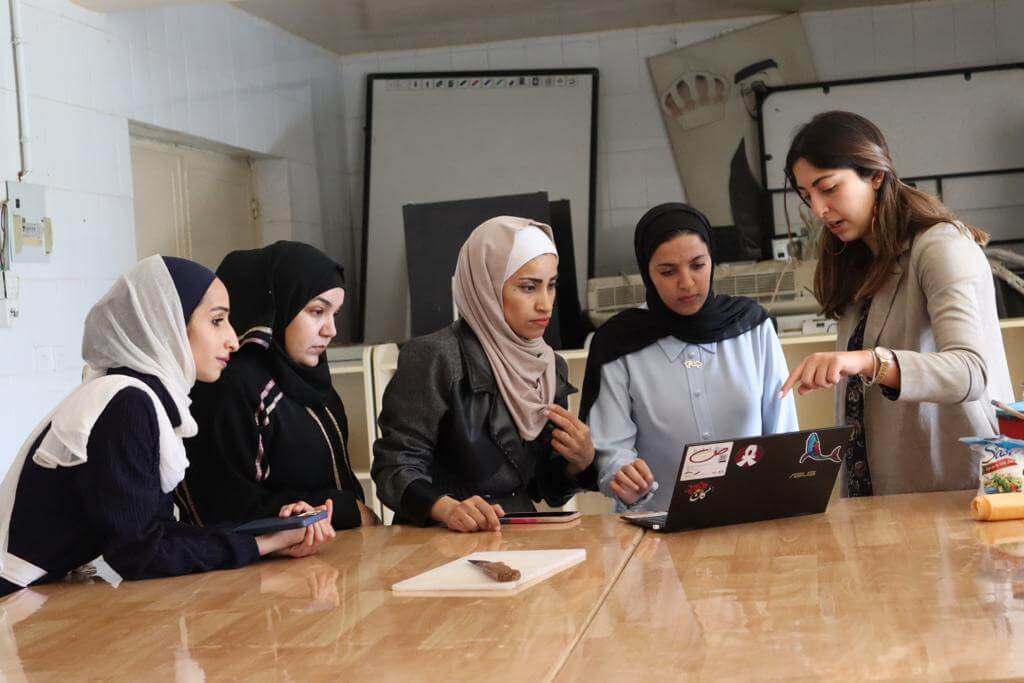
preparing the fabric¶
Materials Used:
Ingredients:
- White cotton fabrics
- water
- Alum
- Soda
Materials:
- Pot
- Wooden Spoon
- Scale
- Source of fire
Here Were The Fun Began :)
The fabrics were already cut using the laser into stripes because we had no chance to bring it to the location of the workshop unfortunately
The Stripes¶
we started with measuring the fabric we had a W.O.F that = 1450g , then I explained what the W.O.F is important and then went to the next steps Scouring and Mordanting
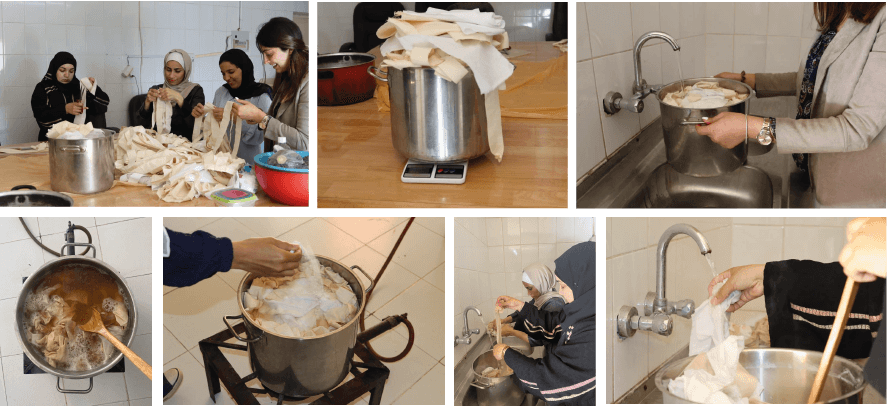
Preparing DyeBath¶
Materials Used:
Ingredients:
- Clean White cotton fabrics
- water
- salt
- cabbage
- vinegar
- Soda
Materials:
- Pots
- Wooden Spoon
- Scale
- small spoons
- knife
- Source of fire
We started Preparing the dyebath by cutting the cabbage into small pieces adding water then heating for 30 minutes add salt then leave for another 15 minutes, split into 3 pots to try modifying
We used vinegar and soda to change the color of the cabbage, add the fabrics and leave overnight
The day after we took the fabric out to dry overnight
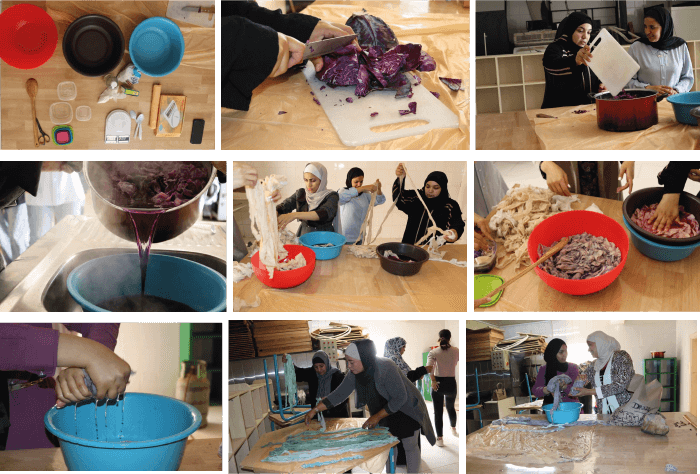
Weaving¶
I had wooden pieces cut already to form a loom, which the girls assembled and made ready to use, then we ironed the fabrics to make them look better some were a bit frayed so we had to use the sewing machine to cut the edges and we were ready the start weaving
The Loom¶
I had a design in mind that we works according to

We started inserting each stripe in one hole of the loom vertically then horizontally to form a final piece, in the middle we used old threads and fabrics wrapped around the stripes in some places representing trees as the valleys are famous in Agriculture, planting fruits and vegetables

Meanwhile we were waiting for the fabrics and dyebath to be ready we discussed the issue of fabric waste in the world, we talked about design thinking and introduced circular fashion and laser cutting
Result¶
And this was the result :)
This is my favorite piece it was the most fun to make and the one I liked the most

#3 Amman¶
Date: THU 16/3/2023¶
The core of this workshop was how to used the laser cutter to form garments from old fabrics using modular circular fashion technique
As usual I started this workshop by introducing the fabric waste issue in the world because this is the aim of this project, then started talking about the laser what is it and how it works what can be cut and what cannot, then talked about circular fashion, and the logic behind it, gave the participants some swatches to see before the practical part of the workshop, the most important thing on this workshop was that the participants learnt how to laser cut so they can use it on their everyday life not just to cut fabric or to use the circular fashion technique but to make use of it to help with their future projects
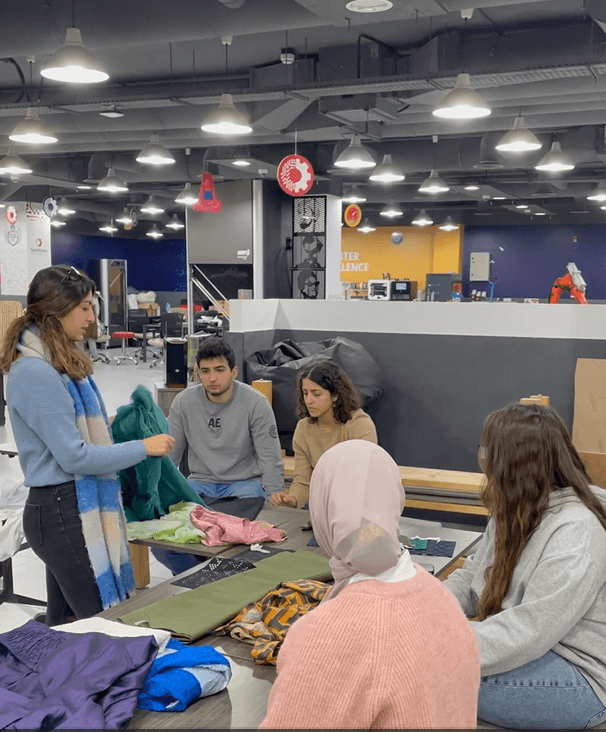
I had a design that was made before as well to guide out process

We sorted the fabrics, cut them open like a sheet then started using the laser
Then showed them how to interlock them to from a garment
The workshop's Storyboard¶

Result¶
This one was the easiest and the fastest to make using the laser makes it fast and accurate
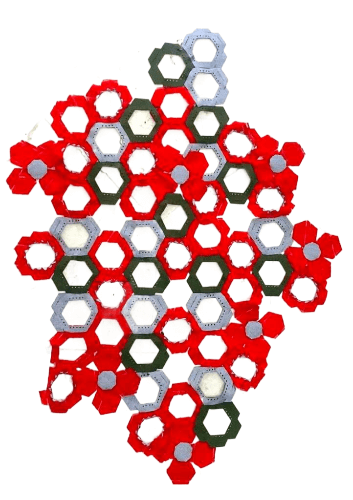
RoadMap & Labels¶
I made a Roadmap showing the places I went to and a Label for each piece with it's wight, materials used, technique and where it was made, using white cotton and engraved on it

Laser settings:
- material: Cotton
- power: CUT 65 ENGRAVE 40
- speed: CUT 5 ENGRAVE 10
Roadmap Result¶

Labels Result¶

fabrication files¶
Useful Tools¶
Some videos have a noisy background, I used this website to remove audio from the videos before uploading to youtube